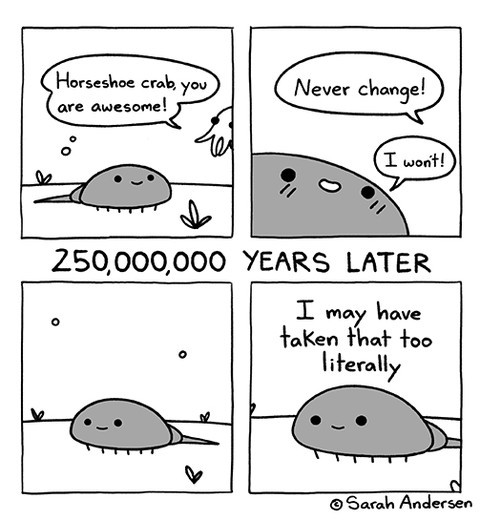this post was submitted on 16 Mar 2024
792 points (98.9% liked)
Comic Strips
12479 readers
3353 users here now
Comic Strips is a community for those who love comic stories.
The rules are simple:
- The post can be a single image, an image gallery, or a link to a specific comic hosted on another site (the author's website, for instance).
- The comic must be a complete story.
- If it is an external link, it must be to a specific story, not to the root of the site.
- You may post comics from others or your own.
- If you are posting a comic of your own, a maximum of one per week is allowed (I know, your comics are great, but this rule helps avoid spam).
- The comic can be in any language, but if it's not in English, OP must include an English translation in the post's 'body' field (note: you don't need to select a specific language when posting a comic).
- Politeness.
- Adult content is not allowed. This community aims to be fun for people of all ages.
Web of links
- !linuxmemes@lemmy.world: "I use Arch btw"
- !memes@lemmy.world: memes (you don't say!)
founded 1 year ago
MODERATORS
you are viewing a single comment's thread
view the rest of the comments
view the rest of the comments

Does anyone know of a good /r/askscience-like community on Lemmy? I've got lots of questions about horseshoe crabs.
I've never read much about horseshoe crabs before. I knew they were interesting, but they're fascinating! Here's a good summary of some of what we know about them: https://www.earthdate.org/episodes/horseshoe-crabs-living-fossils
Interestingly, because their environment is replete with bacteria and their circulatory system makes them particularly prone to infection, they have developed a zero-tolerance immune system. It kills anything it finds that is abnormal.
I wonder how much impact their immune system has on their stagnant evolution. Does killing all intruders reduce the likelihood of mutations by disallowing viruses and the mutations that they bring? Does their immune system know what their DNA should look like and immediately kill any mutations that it finds?
The dna is not stagnated and neither is the evolution. Check out this video for more info
https://youtu.be/23thr68Xj-c
Thank you, this was really interesting. I was trying to look up more information on "stabilimorphs" but google pulls up nothing on the term. I'm wondering what causes them to continue mutating in such a stable way. Are they simply that well adapted that they've fallen into a stable configuration that has no instability in any of the many dimensions available or is there something else that is maintaining their physical configuration while mutations continue to occur?